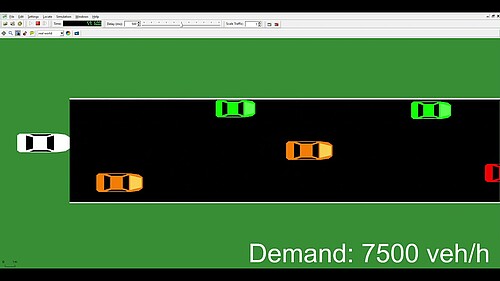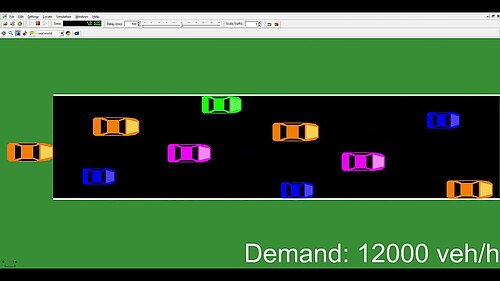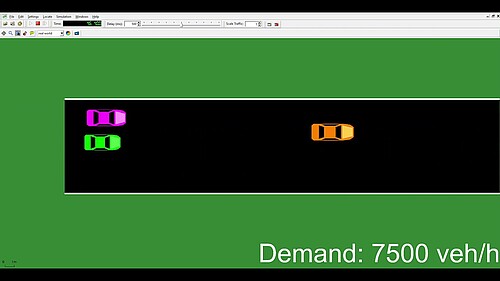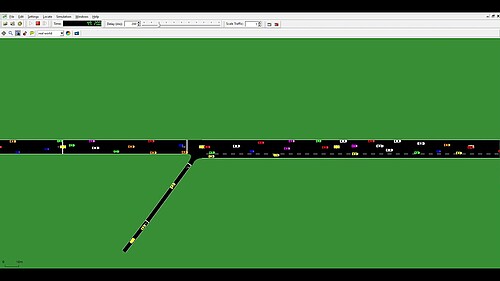Video Playlist 9. Lane-free microscopic simulation for connected and automated vehicles
The videos included in this playlist are part of the results discussed in the paper titled "Extending SUMO for lane-free microscopic simulation of connected and automated vehicles", presented to the SUMO User Conference 2022. This is an enhanced and extended version of the approach and results presented in the paper titled "Lane-free microscopic simulation for connected and automated vehicles". In these videos, we demonstrate the TrafficFluid-Sim simulator, aimed primarily for Connected and Automated Vehicles (CAVs) under a novel lane-free traffic paradigm. In particular, TrafficFluid-Sim builds on the SUMO simulation infrastructure and models traffic environments where vehicles can be located in an arbitrary lateral position within the road boundaries, and their automated nature and connectivity allow for the novel concept of "vehicle nudging" to be applied. Here, we illustrate the insertion policies that handle the demand, as presented in the papers, and finally, we also show a lane-free traffic scenario with an on-ramp.
Handling a demand of 7500 veh/h
In this video, we showcase how the insertion policy handles a demand of 7500 veh/h, using multiple types of vehicles, and aiming to find a proper lateral position to insert a new vehicle. The vehicles employ an ad-hoc movement strategy (see link). The road width is 10.2 meters, corresponding to a 3-lane freeway. Simulation is slowed down in order to have a better view of the insertion policy.

Handling a demand of 12000 veh/h
In this video, we showcase how the insertion policy handles a demand of 12000 veh/h, using multiple types of vehicles, and aiming to maximize the flow that can be achieved. Here, we examine more demanding conditions, close to the limit of the flow we can achieve. The vehicles employ an ad-hoc movement strategy (see link). The road width is 10.2 meters, corresponding to a 3-lane freeway. Simulation is slowed down in order to have a better view of the insertion policy.

Handling a demand of 7500 veh/h (alternative policy)
In this video, we showcase how the alternative insertion policy handles a demand of 7500 veh/h, using multiple types of vehicles, aiming to introduce vehicles with desired speeds that correspond to a selected distribution (in this case, a uniform one), and, in addition, to assign an initial lateral placement for each vehicle to be inserted that is proportional to its respective desired speed. This demand is close to the limit of the flow we can achieve using this policy. The vehicles employ an ad-hoc movement strategy (see link). The road width is 10.2 meters, corresponding to a 3-lane freeway. Simulation is slowed down in order to have a better view of the insertion policy.

Lane-free traffic scenario with an on-ramp
A traffic scenario containing an on-ramp is demonstrated. Here the vehicles on the on-ramp obtain real-time information about the ones on the highway, for consideration by their vehicle control strategy. The vehicles employ an ad-hoc movement strategy (see link). Simulation is slowed down in order to have a better view of the simulation environment.

